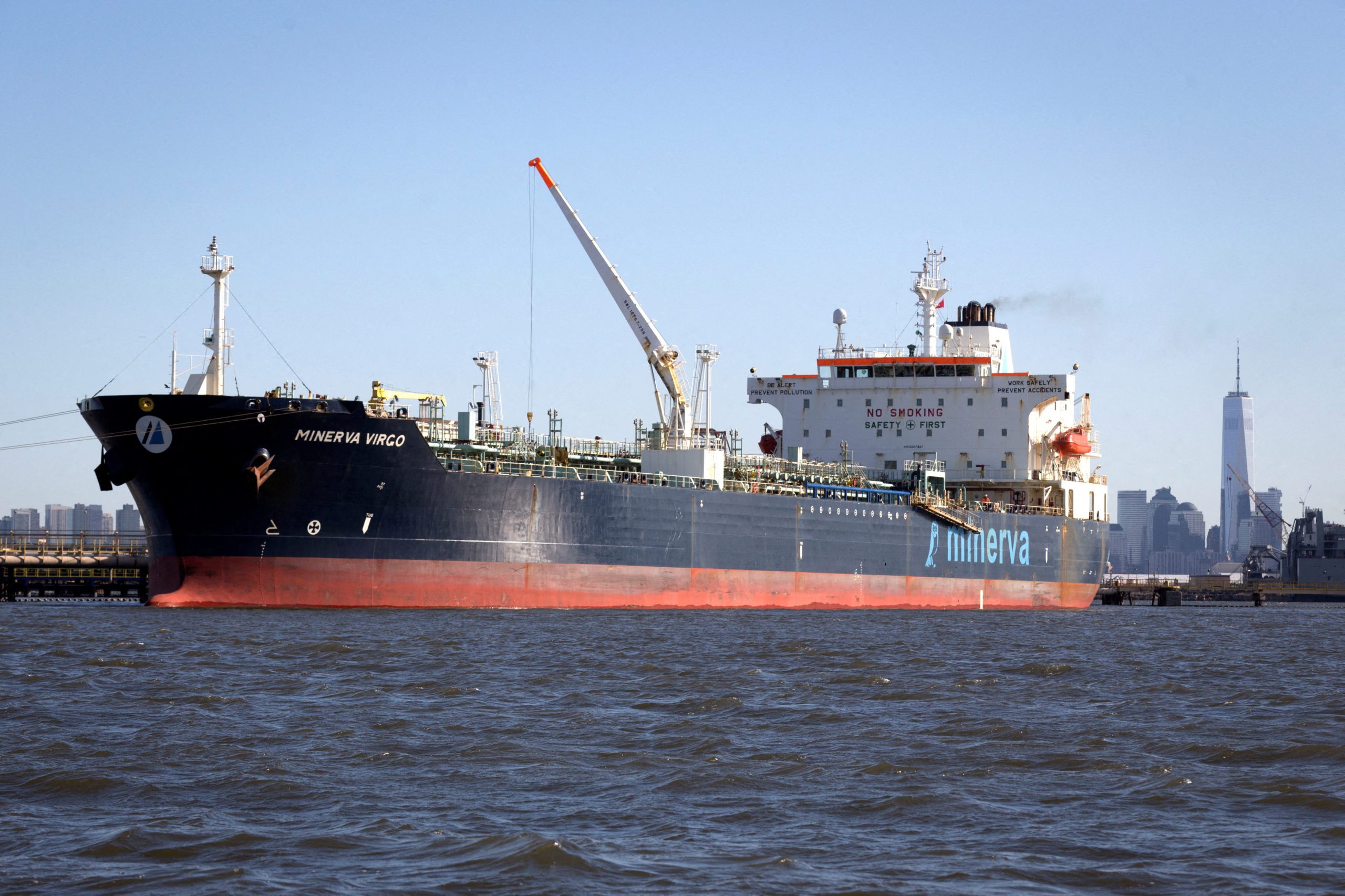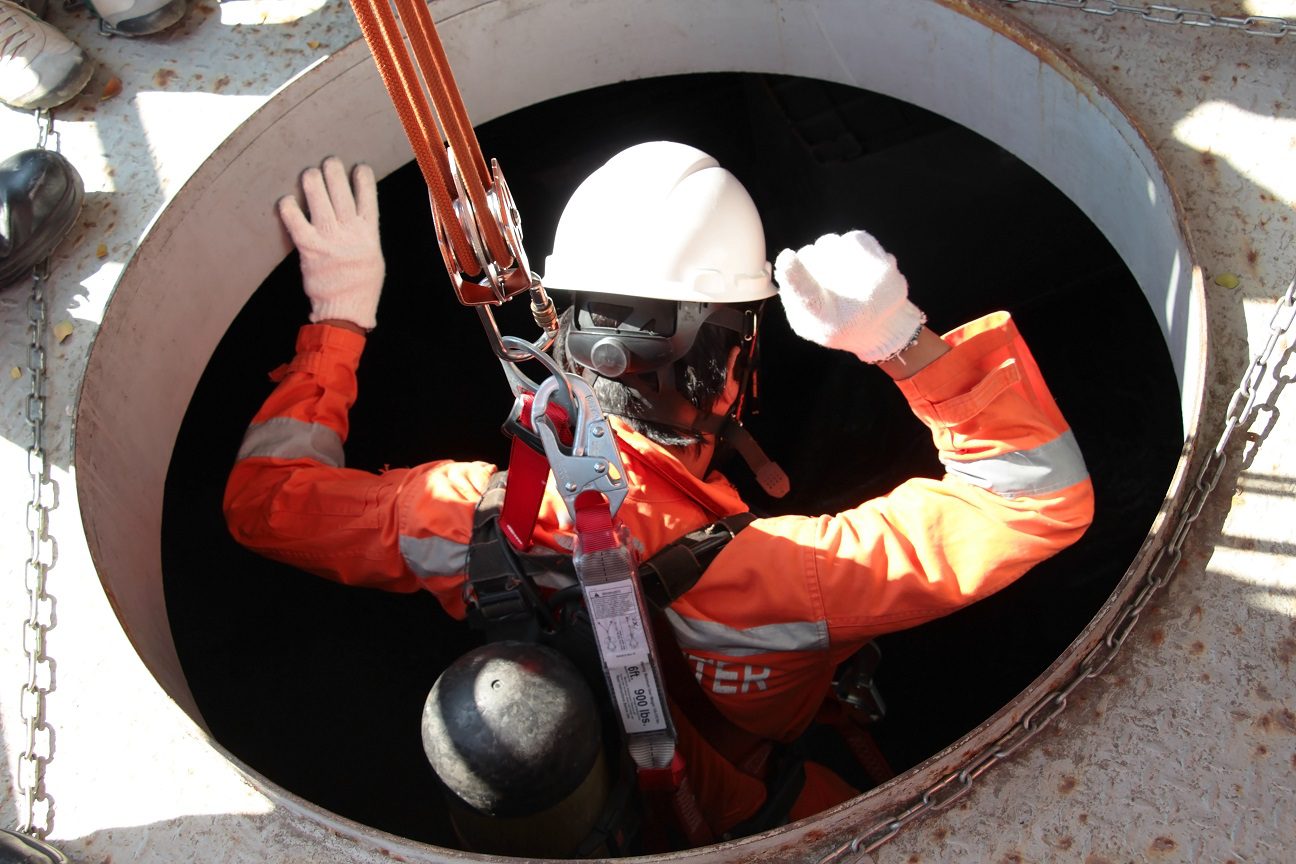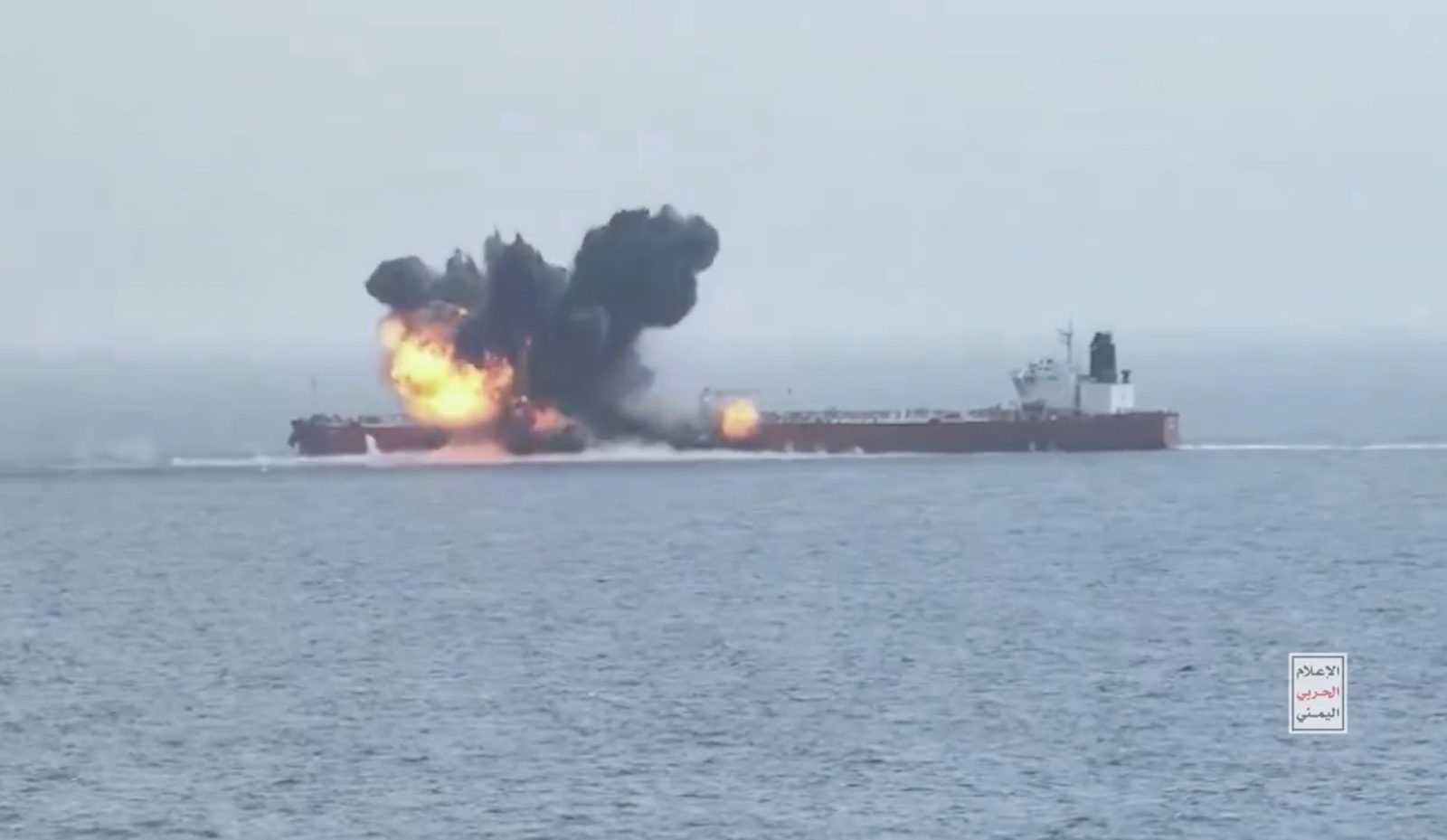By Jack Wittels (Bloomberg) –For decades, a steady stream of ocean tankers has filed back and forth between a small cluster of ports in northwest Europe and the Baltic Sea. Typically, each would bring about 40 million liters of diesel to help keep Europe’s economy humming. Tomorrow, that will be banned — along with almost any other deliveries of Russian fuels to the European Union.
While that had initially caused some alarm, the new rules are designed to be so inherently leaky that it will dull the pain for both sides. The biggest winners will very likely be traders and shipping companies as the fuel appears set to keep flowing, just via more complex, roundabout routes.
“The system will find its equilibrium sooner or later. At a cost for everybody, of course,” said Dario Scaffardi, who until last year ran one of Europe’s biggest oil refineries as chief executive of Italy’s Saras SpA. “I don’t think there’s going to be any big crisis.”
The price of diesel soared in Europe when Russia first invaded Ukraine almost a year ago. It’s since declined somewhat, and recent moves suggest easing concern about the impact of the ban.
The bloc, in agreement with Group of Seven governments, is also introducing a price cap of $100 a barrel on Russian diesel.
That means any third countries seeking to access key services for the nation’s cargoes will only be able to do so if they pay below the cap. For example, Europe and the UK are major providers of shipping insurance and reinsurance that would otherwise be prohibited.
But rather than impede exports, the relatively high threshold is designed to let them happen. Rerouting diesel-type trade flows through non-EU countries will also cushion the impact of the ban.
Still, there’s plenty of uncertainty about how all of this will play out. Europe, where transport, industry and farming are all heavy consumers of diesel, has already endured months of energy stress caused by the war. The crunch has sent fuel bills skyrocketing and helped drive economies toward recession.
And there may well be some early disruption to supply. Russia and those companies trading its fuel will need to line up alternative buyers for the roughly 600,000 barrels it previously sent to the EU every day, as well as sort out shipping and credit.
Stockpiling Effort
Countries have been urgently stockpiling in recent months, with shipments into the EU hitting the highest since at least the start of 2016 in the final quarter of last year. Arrivals have also remained well above normal so far in 2023.
In addition, there are numerous legal ways to circumvent the ban that will keep Russia’s exports and Europe’s imports flowing, even if direct trade will halt.
Russian crude is even likely to get processed in countries like India and then get sent to Europe as non-Russian diesel.
“We don’t expect Europe to run dry,” said Eugene Lindell, head of refined products at Facts Global Energy. “There are enough volumes around, it’s just a question of tapping the possibilities.”
For now, Russia appears to not be anticipating much disruption. It plans to export about 730,000 barrels a day of diesel from key western ports this month, according to industry data seen by Bloomberg. That would be the biggest flow since at least the start of 2020.
And the nation’s energy minister sees no reason for a sharp drop in oil refinery operations and fuel output when the EU’s measures kick in, Tass reported.
Whether or not it plays out that way depends, in part, on how well Russia can muscle into new markets. For example, getting countries to buy Russian diesel and then those nations redirecting fuel they would previously have been making — or importing — toward Europe.
This may be attractive to traders in nations who can buy cheap Russian cargoes and sell their own supply into the EU at a marked-up price.
Russian diesel from the Baltic Sea was assessed at around $90 a barrel earlier this week, about 25% below the cost of the fuel for delivery into northwest Europe, according to data from Argus Media Ltd. With so much wariness around dealing with Moscow, discounts at the point of export could get deeper still.
Turkey imported a record amount of Russian diesel-type fuel in December, based on data going back to 2016 from Vortexa Ltd., compiled by Bloomberg. Its overall exports also surged to a record high last month.
This trade is legal and looks a likely way that the impact of the ban will be cushioned.
Similarly, Morocco’s imports jumped last month, with a big increase from Russia. The more that happens, the more traders can divert cargoes from traditional suppliers toward Europe.
Such workarounds will help flows to be essentially re-shuffled rather than dramatically cutback.
But they also add complexity to a vast global trading system, heightening the risk of supply-chain snarls or unexpected disruptions.
Ships may have to sail significantly further, pressuring the merchant fleet. Already in the Mediterranean Sea, tankers carrying diesel from Russia’s Baltic port of Primorsk to Turkey have been sailing in the opposite direction to those hauling the same product from the Middle East to France.
According to Ben Luckock, co-head of oil trading at Trafigura, there’s a “vast volume that needs to find a new home.”
“We’re building a deep inefficiency into an oil market that has spent decades becoming incredibly efficient,” he said. “Inefficiencies tend to increase prices.”
Along with the ban on seaborne imports is the price cap. Russian fuel can also still be sold legally above the cap, just not to firms using western financial services. A large number of tankers — a so-called shadow fleet — has been assembled for this purpose.
All of that still may not be enough to cover all Russia’s output, however. Wood Mackenzie Ltd., a London-based consultant, expects the country’s diesel exports to fall by about 200,000 barrels a day this quarter versus the last three months of 2022.
Mark Williams, research director of short-term refining and oil products at Woodmac, expects a diesel price spike, though not quite to the levels in 2022, “when the market freaked out.”
“There’s been time to build stocks and source alternative barrels,” he said.
–With assistance from Ali Asad Zulfiqar and Prejula Prem.
© 2023 Bloomberg L.P.
Unlock Exclusive Insights Today!
Join the gCaptain Club for curated content, insider opinions, and vibrant community discussions.

 Join The Club
Join The Club













